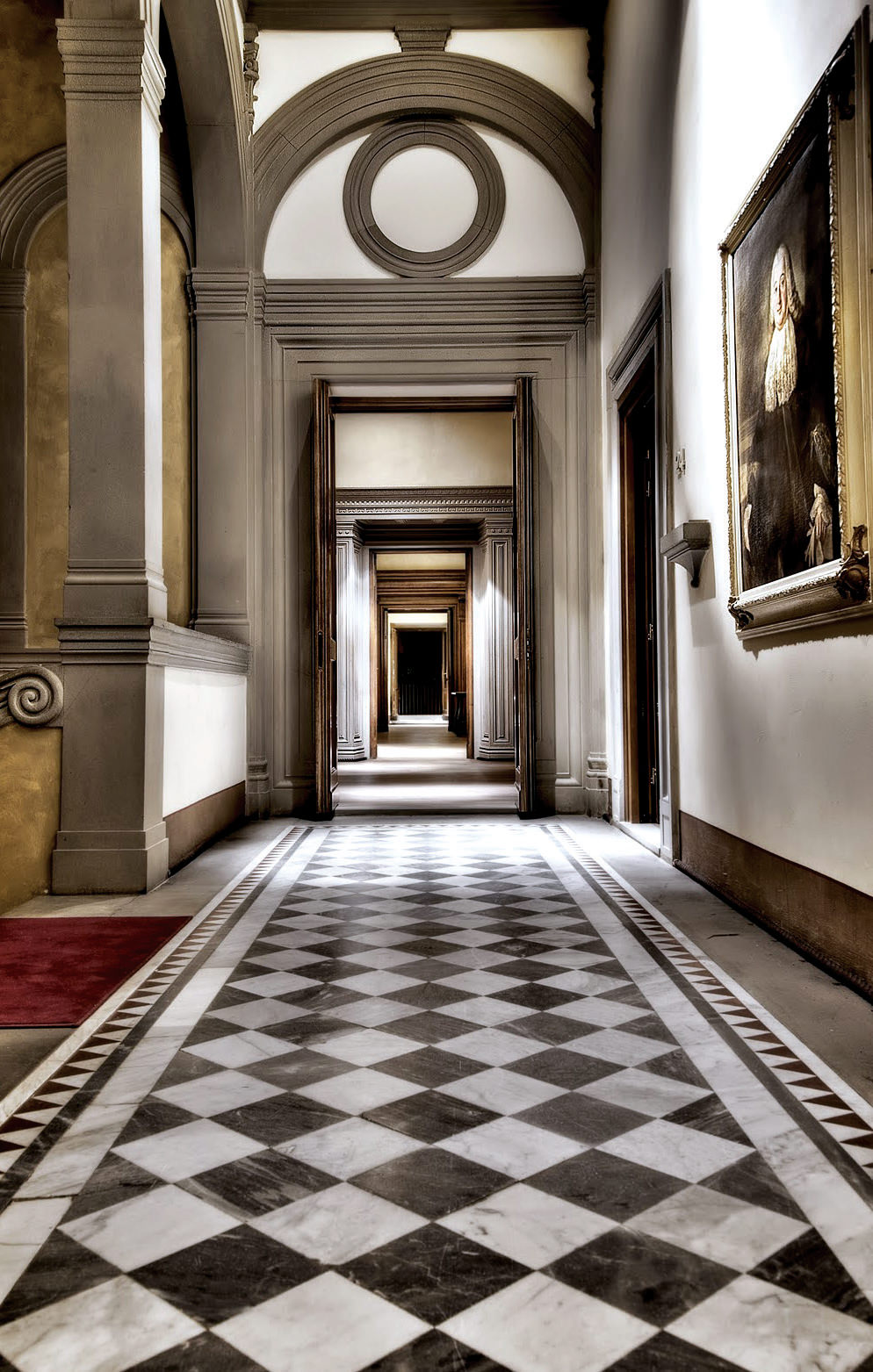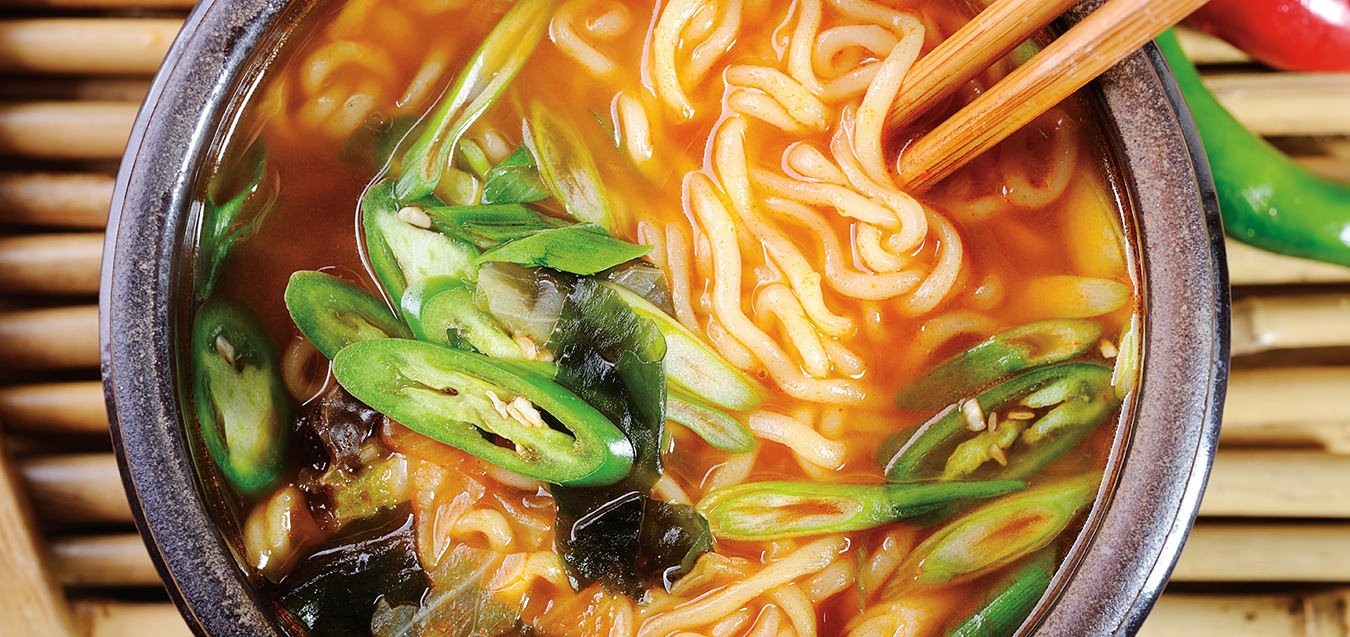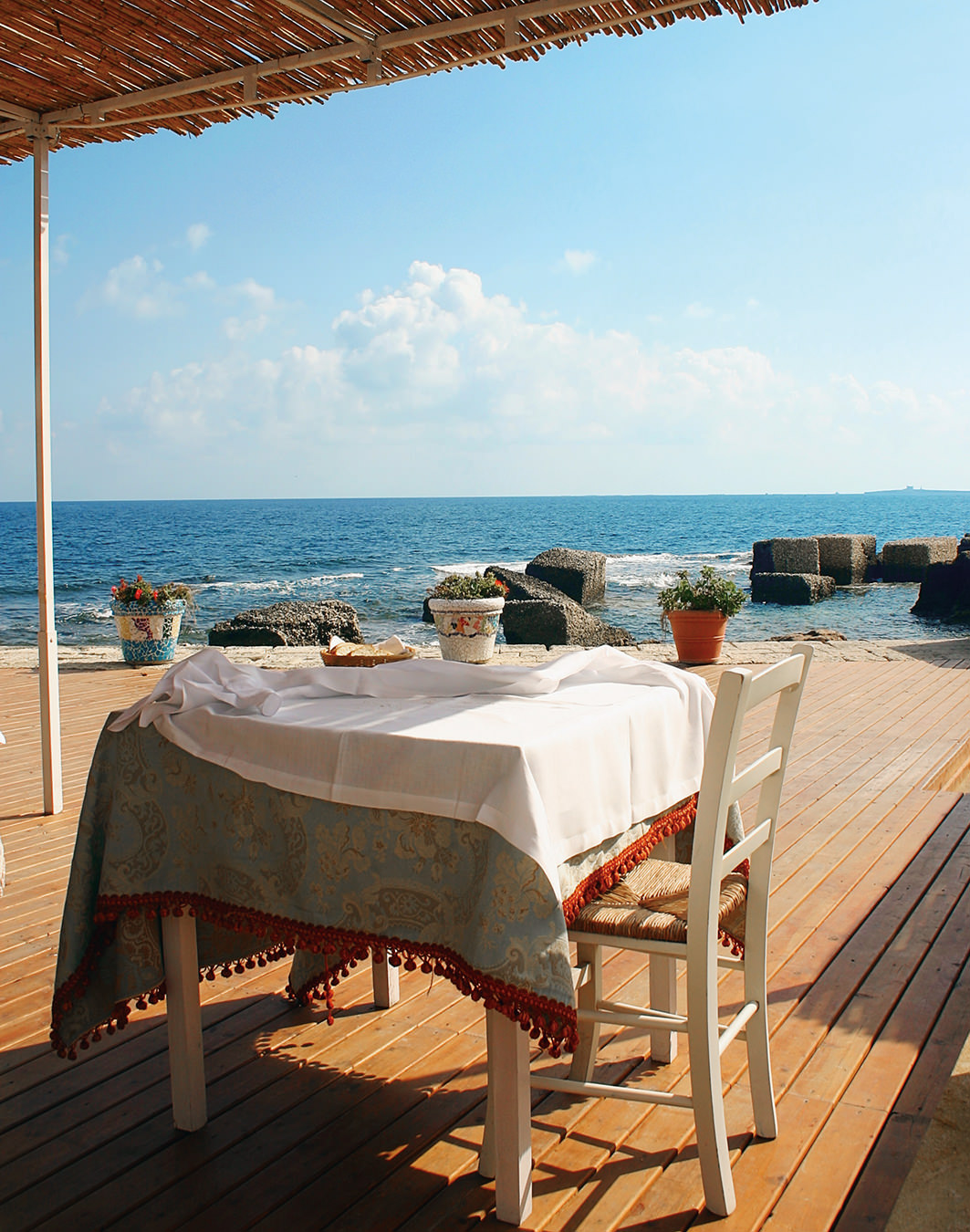-

The most famous Pastificio Gentile shape, the handmade fusilli roughly 50 centimetres long.
-
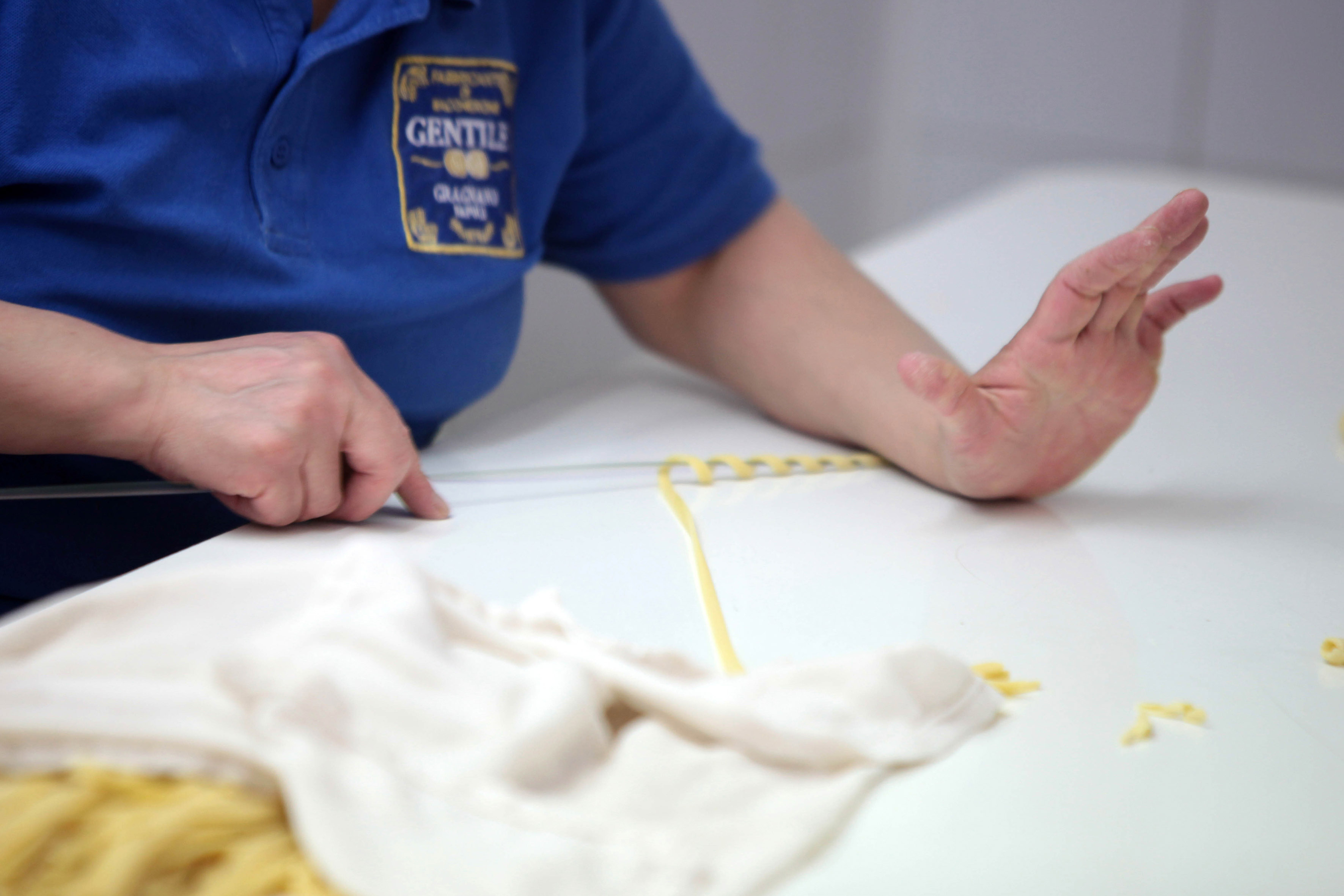
Each individual noodle is twisted around a knitting needle to give it its helical shape.
-
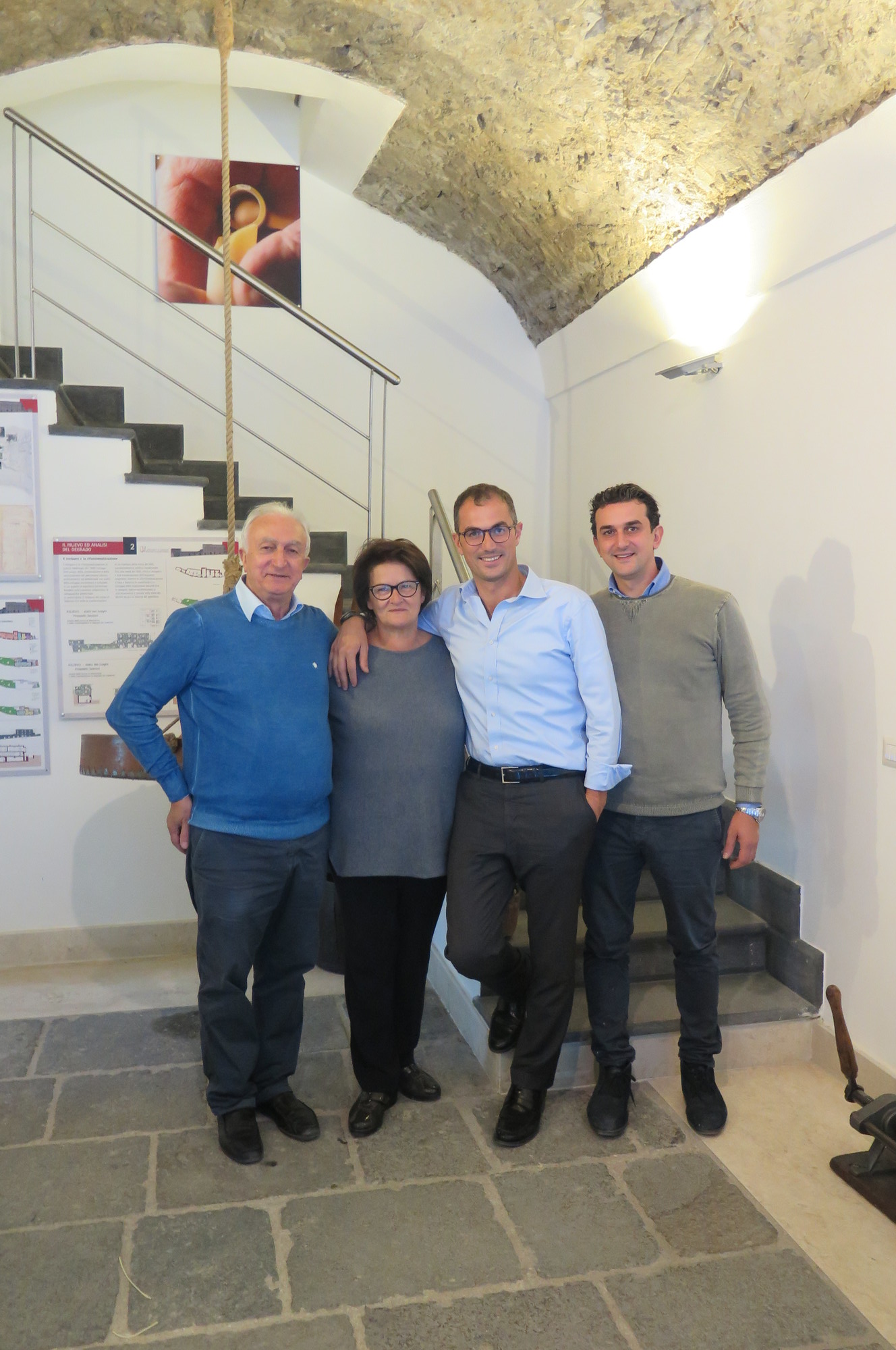
Pasquale and Alberto Zampino (at right) along with their father and mother, Natale and Maria, care for Pastificio Gentile, the family business that began in 1876 in Gragnano, Italy.
-

Gentile’s pasta is bronze drawn—as the dough is pressed through bronze plates, the roughness of the holes creates a porous surface that helps the pasta cook evenly and absorb more sauce.
-

The pasta hangs from rods once drawn and moved to a drying chamber.
-
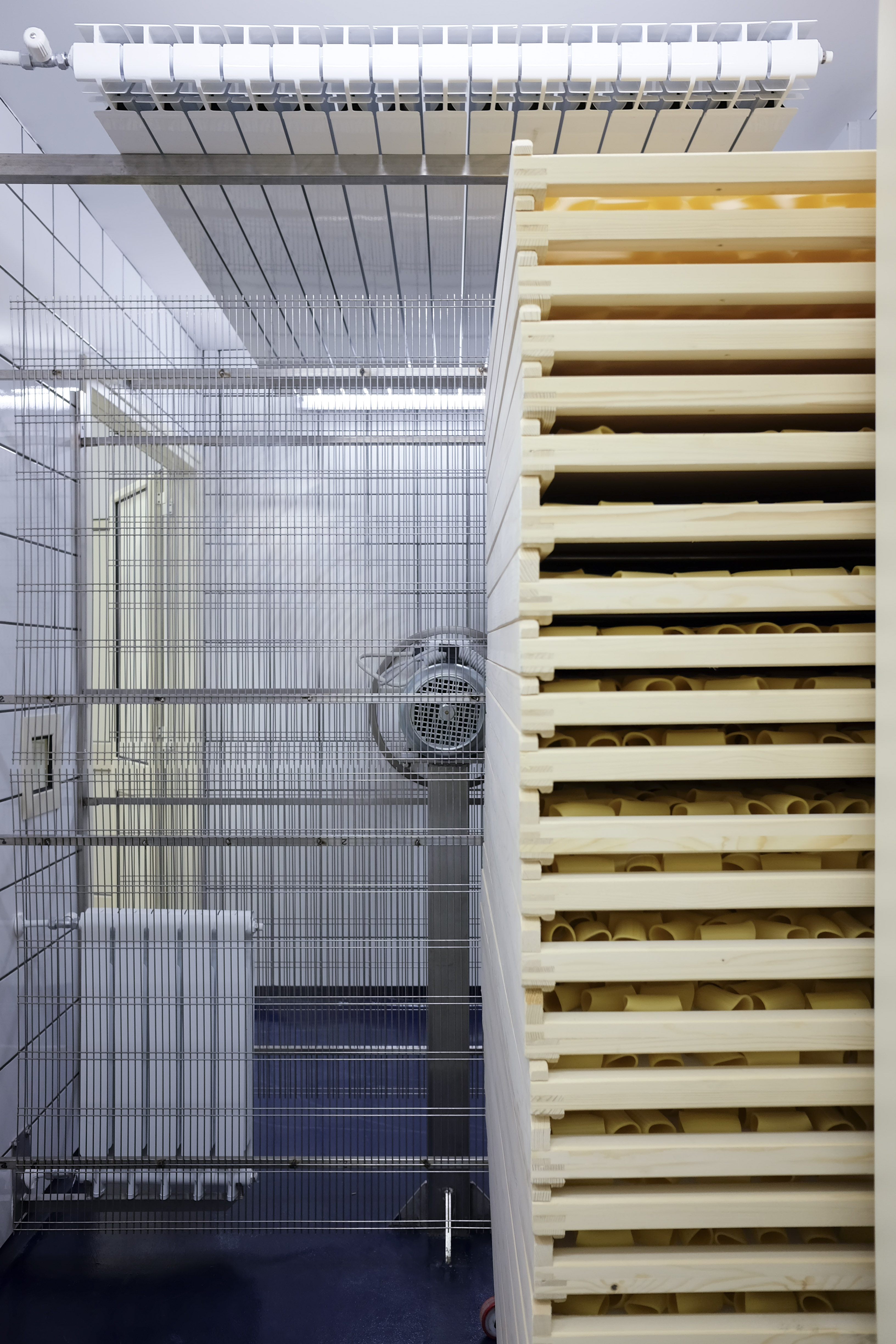
Gentile pasta is slow dried using the Cirillo method. The drying chamber is a maximum temperature of 50°C, where heaters act as the sun and fans as wind. (An engineer named Cirillo created the method that would mimic the natural drying of pasta inside the factory.)
-

Pastificio Gentile is very much an artisanal pasta maker where handiwork dominates.
-

Gentile pasta produces 50 types of pasta from the traditional Neapolitan shapes of bucatini, mafalde, conchiglioni, and paccheri to the all-time favourites of penne, linguine, and spaghetti.
-

Gentile pasta is made from an heirloom variety of durum wheat known as Senatore Cappelli, an ancient variety grown in Puglia that has not undergone genetic manipulation and contains higher percentages of lipids, amino acids, vitamins, and minerals.
-
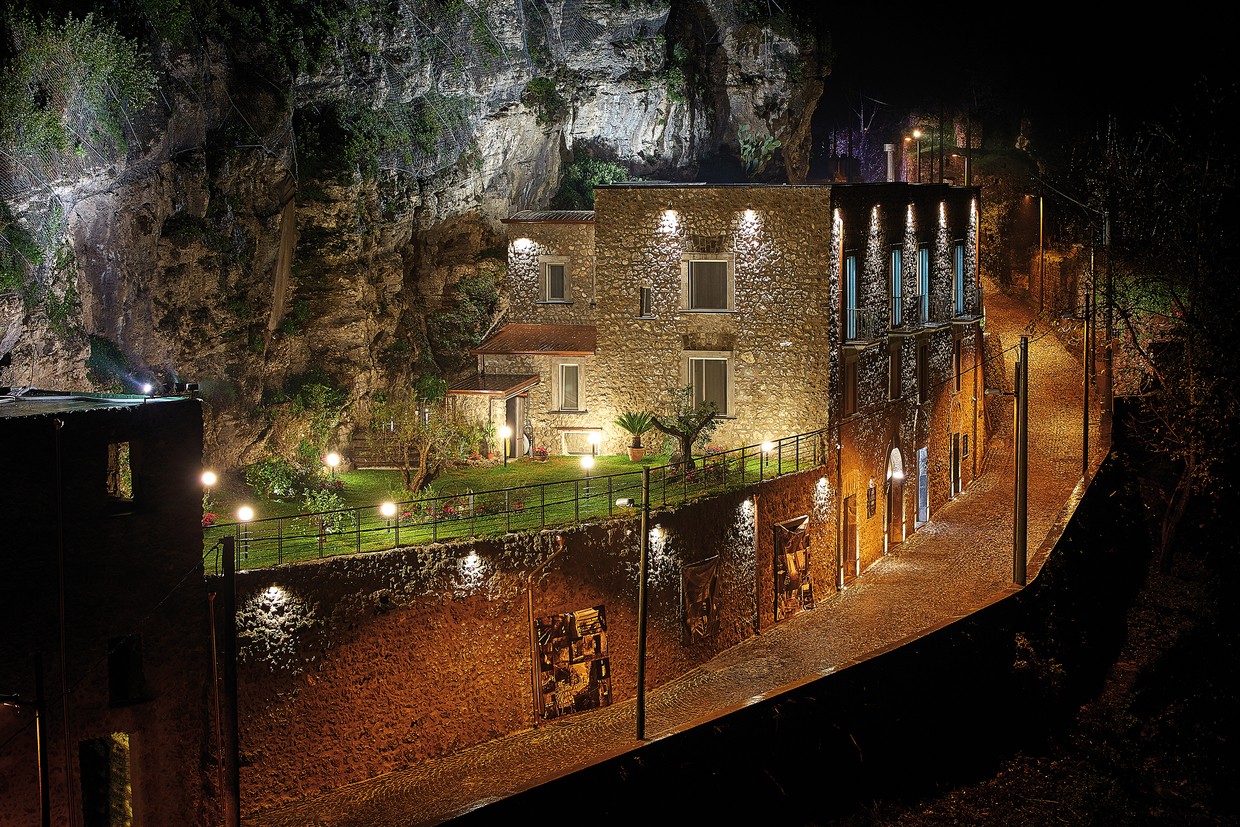
The building in which Pastificio Gentile resides dates back to 1650; the Zampinos purchased the abandoned pasta mill in 2013 (having outgrown their original location) and took two years to restore it.
-

In Canada, Gentile pasta is distributed by Perugini.
Gentile Artisanal Pasta
Keepers of tradition.
In the small town of Gragnano, Italy, members of the Zampino family are custodians of a nation’s pasta tradition. Gragnano’s place in pasta history is rooted in its location, not far from the Amalfi Coast, where the combination of water, mountain air, and plenty of sunshine popularized the air-dried, bronze-extruded pasta around the world. Back in the 1930s, there were as many as 150 pasta mills in the area. Today, there are 13.
Brothers and pastai—pasta makers—Pasquale and Alberto Zampino along with their father, Natale, care for Pastificio Gentile, the family business that began in 1876 and today produces 50 types of pasta. From the traditional Neapolitan shapes of bucatini, mafalde, conchiglioni, and paccheri to the all-time favourites of penne, linguine, and spaghetti—the shapes are made with bronze plates, save for the most famous Pastificio Gentile shape, the handmade fusilli roughly 50 centimetres long, each individual noodle twisted around a knitting needle to give it its helical shape.
“What made Gragnano so famous is the ventilated microclimate for the production of dry pasta,” states Alberto. From the garden terrace of his pasta mill, where a 200-year-old pomegranate tree shows signs of first fruit, he points in the direction of via Roma, the historic street in town, where, in the old days, pasta was left to hang on rods to dry in the sun as wind would pour down the valley. “The morning wind from the sea is humid,” explains Alberto. “The afternoon wind from the mountains is dry. The combination of the two winds made for the best drying method.”
“Quality has always been and will continue to drive us forward,” asserts Alberto. “We are artisanal pasta makers.”
The building in which Pastificio Gentile resides dates back to 1650; the Zampinos purchased the abandoned pasta mill in 2013 (having outgrown their original location) and took two years to restore it. “The jewel of this structure is the manufacturing and drying chambers,” says Alberto of the three-storey building. You may visit the premises, by appointment only; hoteliers like Monastero Santa Rosa in the vicinity extend a visit as part of their programming.
“Quality has always been and will continue to drive us forward,” asserts Alberto. “We are artisanal pasta makers.” Gentile produces roughly 4,000 kilograms of pasta per day. In comparison, as Alberto notes, Garofalo—also from Gragnano, but an industrial manufacturer—produces in one day what Gentile produces in a year.
Making pasta the old-fashioned way means slowing down the process. Drying it at lower temperatures takes longer; so does running the dough through holes in bronze plates instead of Teflon ones. Gentile’s pasta is bronze drawn—as the dough is pressed through bronze plates, the roughness of the holes creates a porous surface that helps the pasta cook evenly and absorb more sauce—and slowly dried using the Cirillo method, which simulates outdoor conditions. The pasta hangs from rods in a drying chamber with a maximum temperature of 50°C, where heaters act as the sun and fans as wind. (An engineer named Cirillo created the method that would mimic the natural drying of pasta inside the factory.) “Street drying took roughly 10 days,” says Alberto. “Our pasta has a three-day drying process. Industrial-made pastas: six hours.”
The casual diner may find it hard to believe that one package of a staple Italian food can be significantly different from another. Not all pastas are made equal. The heart of the debate is in the pasta-making details as well as exactly what wheat ought to be blended with water to make the dough. Gentile pasta is made from an heirloom variety of durum wheat known as Senatore Cappelli, an ancient variety grown in Puglia that has not undergone genetic manipulation and contains higher percentages of lipids, amino acids, vitamins, and minerals.
In Italy, pasta is a sacramental object whose serving is regulated by steadfast traditions. It is fed to babies as soon as they can take in solids. Its place as a primo at lunch and dinner is virtually law. It should be cooked al dente—that is, only to the point where it is still firm, making it easily digestible—then added to its sauce. Long pasta is for thin sauces, short pasta for thicker ones. In Canada, Gentile pasta is distributed by Perugini.
In the kitchen at Gentile, Maria, the family matriarch, prepares dishes for the mid-day meal: fusilli sauced with clouds of just-made ricotta and melanzane (eggplant); paccheri topped with the San Marzano tomatoes she puts up for her canning business. “When you have a buona pasta, un buonissimo San Marzano, what else do you need?” asks Alberto, emphasizing the simplicity of genuine quality.
Gentile pasta is available for purchase online at Perugini.
_________
Never miss a story. Sign up for NUVO’s weekly newsletter, here.


